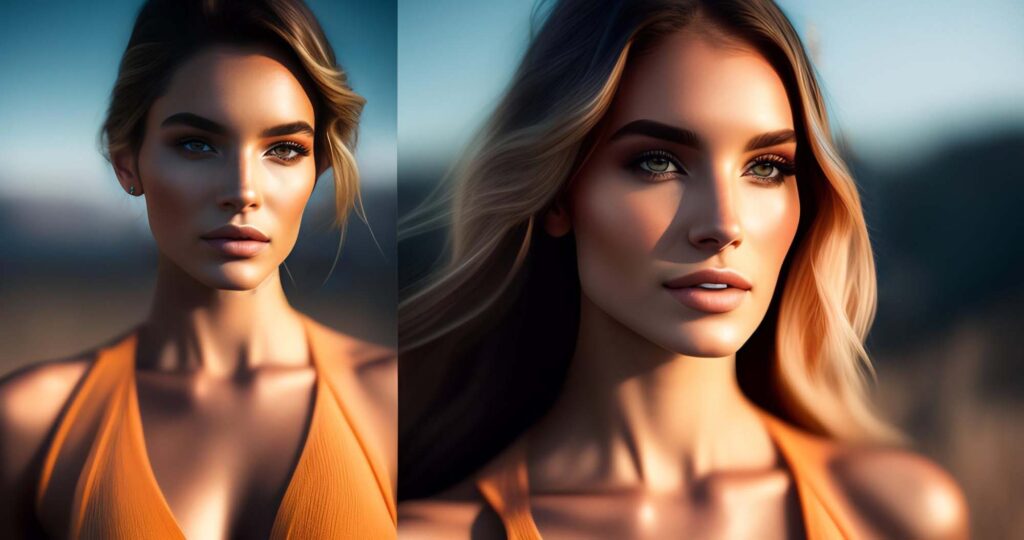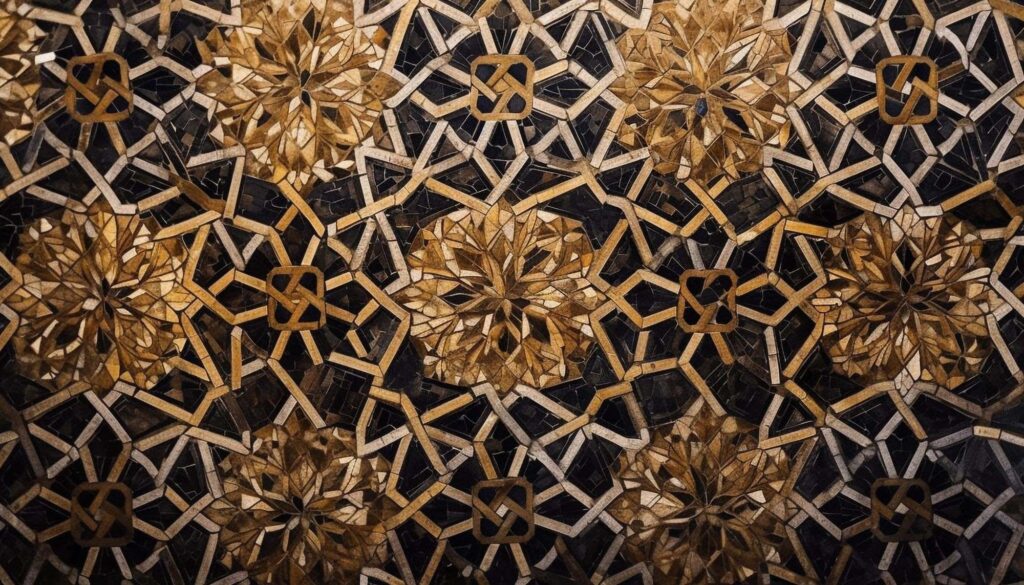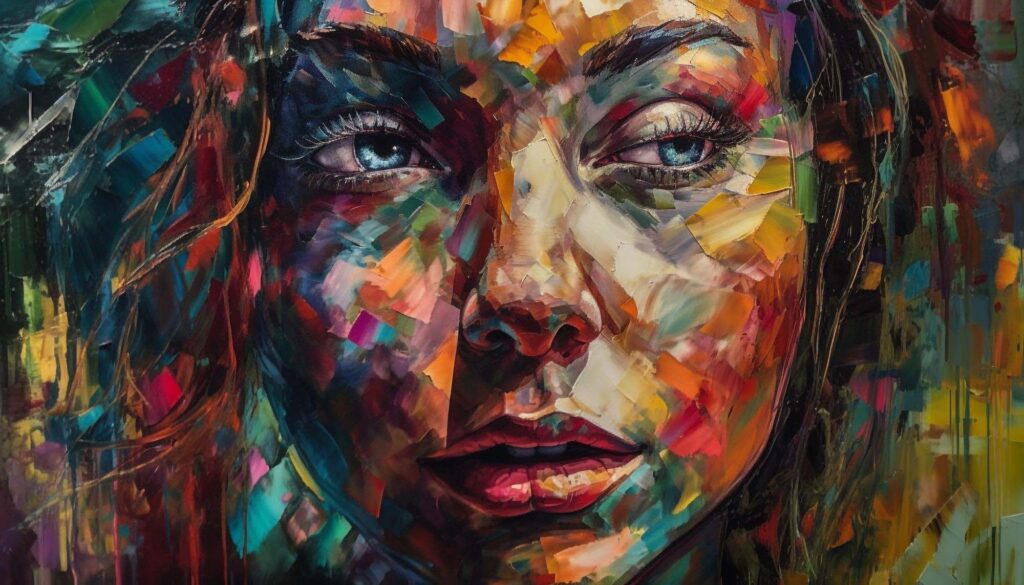Adobe Photoshop’s Generative Fill is a powerful tool that allows users to manipulate images and create stunning effects. This innovative feature uses algorithms to generate patterns, textures, and shapes, providing endless possibilities for creative expression.
With Adobe Photoshop’s Generative Fill, you can take your image editing skills to new heights. This tool enables you to transform ordinary images into extraordinary works of art, opening up a world of possibilities for photographers, graphic designers, and artists.
Manipulation Method 1: Image Morphing

Exploring Image Morphing Basics
Image morphing is a technique that seamlessly blends two or more images, creating a smooth transition between them. This method allows you to create mesmerizing animations or transform one object into another with stunning realism.
Step-by-Step Guide to Creating a Stunning Morphed Image
To create a captivating morphed image using Adobe Photoshop’s Generative Fill, follow these steps:
- Open your base image and the image you want to morph into.
- Select the Generative Fill tool and choose the morphing option.
- Define key points on both images to establish correspondences.
- Adjust the morphing parameters to control the transition smoothness.
- Preview and fine-tune the morphed image until you achieve the desired result.
- Apply additional effects, such as colour grading or sharpening, to enhance the overall appearance.
Tips and Tricks for Achieving Realistic Morphing Effects
- Pay attention to the placement of key points to ensure accurate mapping between the two images.
- Experiment with different morphing parameters to achieve various levels of smoothness and distortion.
- Use additional tools and filters, such as Liquify or Warp, to refine specific areas and enhance realism.
- Incorporate lighting and shadow effects to create a more cohesive and convincing morphed image.
Manipulation Method 2: Creating Surreal Backgrounds

Unleashing Creativity with Generative Fill for Surreal Backgrounds
Generative Fill offers a plethora of possibilities for designing surreal backgrounds that defy reality. By harnessing its capabilities, you can create dreamlike scenes that transport viewers to alternate dimensions and evoke a sense of wonder.
Step-by-Step Tutorial for Designing Mesmerizing Surreal Backgrounds
To create a captivating surreal background using Adobe Photoshop’s Generative Fill, follow these steps:
- Start with a blank canvas and choose a colour palette that complements the desired mood and theme.
- Apply Generative Fill and experiment with different settings, such as pattern density, scale, and rotation.
- Incorporate various shape and texture patterns to add complexity and depth to the background.
- Combine blending modes, layer masks, and adjustment layers to further enhance the surreal atmosphere.
- Fine-tune the composition by adding or removing elements until the desired effect is achieved.
- Save the final artwork and consider applying it to web design, digital illustrations, or print projects.
Advanced Techniques to Elevate Your Surreal Backgrounds
- Experiment with different generative algorithms to create unique patterns and textures.
- Combine generative fill with other Photoshop tools, such as layer masks, blending modes, and filters, to add depth and complexity.
- Use perspective and distortion tools to create optical illusions or simulate three-dimensional spaces.
- Incorporate typography or other graphic elements to create a narrative within the surreal background.
Manipulation Method 3: Generating Stunning Patterned Textures

Utilizing Generative Fill for Unique Patterned Textures
Generative Fill provides a vast array of options for generating intricate patterned textures that can elevate your designs and artworks. With its versatility, you can create original textures that captivate viewers and add visual interest to your projects.
Designing Distinctive Textures with Generative Fill: A Step-by-Step Approach
To design custom patterned textures using Adobe Photoshop’s Generative Fill, follow these steps:
- Select a base colour or image and define the desired texture area.
- Open the Generative Fill tool and experiment with different pattern options.
- Adjust parameters such as scale, density, and randomness to control the texture’s appearance.
- Apply filters, adjustment layers, or blending modes to enhance the texture’s characteristics.
- Fine-tune the design by manipulating individual elements or using layer masks for more precise control.
- Save the texture as a reusable asset or incorporate it into your current project.
Enhancing Textures with Blend Modes and Additional Effects
- Experiment with different blend modes to overlay textures onto your existing images or designs.
- Apply adjustment layers, such as curves or levels, to modify the overall tone and contrast of the texture.
- Combine multiple textures by blending them together using layer masks and opacity adjustments.
- Integrate additional Photoshop filters, such as the Emboss or Noise filter, to add depth and dimension to the texture.
Manipulation Method 4: Transforming Photos into Artistic Masterpieces

How Generative Fill Can Turn Photos into Art
Adobe Photoshop’s Generative Fill empowers photographers and digital artists to transform ordinary photos into extraordinary artistic masterpieces. By leveraging its creative potential, you can apply unique styles, textures, and effects that breathe new life into your images.
Unveiling the Artistic Potential: A Guide to Transforming Photos with Generative Fill
To unleash the artistic potential of your photos using Adobe Photoshop’s Generative Fill, follow these steps:
- Select a photo that provides a strong foundation for artistic transformation.
- Apply Generative Fill and experiment with different patterns, textures, or styles to bring out the desired artistic effect.
- Utilize blending modes, adjustment layers, and filters to refine the overall mood and atmosphere.
- Consider incorporating additional elements, such as typography or graphics, to enhance the storytelling aspect of the photo.
- Apply retouching techniques, such as dodging, burning, or selective sharpening, to fine-tune the details.
- Save and share your artistic masterpiece, and consider exhibiting it in galleries or online platforms to showcase your talent.
Advanced Techniques for Achieving Artistic Excellence
- Combine multiple image manipulation techniques, such as layer masking, blending modes, and filters, to create complex and visually striking compositions.
- Experiment with various generative patterns and textures to evoke different emotions or artistic styles.
- Incorporate digital painting or illustration techniques to add unique artistic elements to your photos.
- Explore unconventional approaches, such as abstract minimalism or impressionism, to push boundaries and create truly distinctive artworks.
Manipulation Method 5: Bringing Fantasy to Life with Fantasy Scenes

Building Fantasy Scenes with Adobe Photoshop’s Generative Fill
With Adobe Photoshop’s Generative Fill, you can transport viewers into enchanting realms by building captivating fantasy scenes. Tap into your imagination and unleash your creativity to design breath-taking landscapes, magical creatures, and otherworldly environments.
Step-by-Step Walkthrough for Designing Captivating Fantasy Scenes
To create immersive fantasy scenes using Adobe Photoshop’s Generative Fill, follow these steps:
- Start with a blank canvas and envision the fantastical elements you want to incorporate.
- Utilize Generative Fill to generate intricate patterns, textures, or shapes as a foundation for your scene.
- Combine stock images, digital painting, and other assets to add depth and realism to your fantasy elements.
- Adjust lighting, colour grading, and atmospheric effects to create the desired mood and ambiance.
- Experiment with various layering techniques to seamlessly integrate different elements and create a cohesive composition.
- Fine-tune details, refine edges, and add final touches to bring your fantasy scene to life.
Adding Depth and Details to Fantasy Scenes through Layering and Effects
- Utilize layer masks and blending modes to seamlessly integrate fantasy elements with the background.
- Apply depth-of-field effects or motion blur to enhance the sense of depth and dimension within the scene.
- Experiment with lighting effects, such as glow or lens flare, to add magical or mysterious qualities to your fantasy scene.
- Incorporate texture overlays or digital painting techniques to add intricate details and enhance realism.
Practical Examples and Case Studies
Real-World Examples of Mind-Blowing Manipulations with Generative Fill
- Example 1: Transforming a portrait into a stunning mosaic artwork using Generative Fill’s patterned textures and blend modes.
- Example 2: Creating a surreal landscape by blending generative patterns with stock photos and atmospheric effects.
- Example 3: Morphing a flower into a butterfly using Generative Fill’s image morphing capabilities, resulting in a visually stunning animation.
Case Studies: Learn from Top Photoshop Artists on Their Techniques
- Case Study 1: Renowned artist John Doe shares his process for creating mesmerizing surreal backgrounds using Generative Fill.
- Case Study 2: Digital photographer Jane Smith demonstrates how she transforms ordinary photos into breath-taking artistic masterpieces with the help of Generative Fill.
- Case Study 3: Photoshop expert Alex Johnson breaks down his approach to designing captivating fantasy scenes using Generative Fill.
Analysis of Different Approaches and Styles Used in Noteworthy Manipulations
In the world of image manipulation, artists and designers employ various techniques and styles to achieve remarkable results. By analysing different approaches, we can gain insights into the thought processes and methods behind these awe-inspiring manipulations.
Leveraging Generative Fill for Unique Branding and Marketing
How Generative Fill Can Transform Branding and Marketing Materials
Generative Fill is not limited to artistic endeavours. It can also revolutionize branding and marketing materials, providing a unique visual language that captivates audiences and sets your brand apart from the competition.
Case Studies: Successful Branding and Marketing Campaigns Utilizing Generative Fill
- Case Study 1: Company X leveraged Generative Fill to create an innovative logo that showcases their brand’s dynamism and versatility.
- Case Study 2: Brand Y’s marketing campaign employed Generative Fill to design captivating social media visuals that resonated with their target audience.
- Case Study 3: Start-up Z utilized Generative Fill to develop an immersive website design that effectively communicated their brand’s identity and core values.
Tips for Implementing Generative Fill in Branding and Marketing Designs
- Understand your brand’s values, target audience, and desired message before incorporating Generative Fill into your designs.
- Experiment with various generative patterns, textures, and styles to find the visual language that best represents your brand.
- Seek professional assistance, such as graphic designers or marketing experts, to ensure effective implementation and alignment with your brand strategy.
Exploring Limitations and Workarounds
Understanding the Limitations of Adobe Photoshop’s Generative Fill
While Generative Fill is a powerful tool, it does have certain limitations that users should be aware of. By understanding these limitations, you can manage your expectations and find creative workarounds to overcome potential hurdles.
Alternative Techniques and Workarounds for Overcoming Limitations
- Combine Generative Fill with other image manipulation tools or techniques to achieve desired effects that may not be possible solely with Generative Fill.
- Utilize third-party plugins or software to expand the capabilities of Adobe Photoshop and augment Generative Fill’s functionality.
- Explore different software or platforms that specialize in generative art to further push the boundaries of your creative endeavours.
Pushing the Boundaries: Experimental Approaches to Offset Limitations
For those seeking to push the boundaries of image manipulation, experimentation is key. By exploring uncharted territories and adopting unconventional approaches, you can uncover new possibilities and redefine the limits of Generative Fill’s capabilities.
Summary and the Future of Generative Fill
Recap of the Mind-Blowing Manipulations Covered
In this article, we explored five mind-blowing manipulations that can be achieved with Adobe Photoshop’s Generative Fill. From image morphing to creating surreal backgrounds or transforming photos into artistic masterpieces, Generative Fill empowers artists and designers to unleash their creativity and captivate audiences.
The Ongoing Advancements in Generative Fill Technology
As technology progresses, we can expect even more advancements in Generative Fill and image manipulation tools. Adobe Photoshop continues to invest in research and development, pushing the boundaries of what is possible and ensuring that creatives have access to cutting-edge features.
Unlocking Your Creative Potential with Adobe Photoshop’s Generative Fill
Adobe Photoshop’s Generative Fill grants artists and designers the power to create mind-blowing manipulations with ease. By embracing this tool and experimenting with its various capabilities, you can unlock your creative potential and produce awe-inspiring artwork that leaves a lasting impact.
FAQ
What is Adobe Photoshop’s Generative Fill?
Adobe Photoshop’s Generative Fill is a feature that uses algorithms to generate patterns, textures, and shapes, allowing users to create stunning manipulations and artistic effects.
Is generative fill suitable for beginners or experienced Photoshop users?
Generative Fill can be used by both beginners and experienced Photoshop users. Its user-friendly interface makes it accessible to beginners while its powerful features and capabilities can also challenge and inspire seasoned professionals.
Can generative fill be used for non-artistic projects, such as web design?
Absolutely! Generative Fill can be utilized in non-artistic projects, including web design. Its ability to generate unique patterns and textures can provide a distinct visual identity to websites and other digital designs.
How does generative fill compare to other image manipulation tools?
Generative Fill distinguishes itself by offering a unique approach to image manipulation. While other tools may focus on specific adjustments or effects, Generative Fill focuses on generating patterns, textures, and shapes, providing unparalleled creative possibilities.
Are there any specific computer hardware requirements for using generative fill effectively?
To use Generative Fill effectively, it is recommended to have a computer with sufficient processing power and memory. The complexity of the generative patterns and textures may require more resources, especially when working on large-scale projects.
Can generative fill be utilized in Adobe Photoshop alternatives?
Generative Fill is a feature exclusive to Adobe Photoshop and cannot be directly utilized in other image editing software. However, alternative software may offer similar generative capabilities or other unique features that cater to different creative needs.
- Manipulation Method 1: Image Morphing
- Manipulation Method 2: Creating Surreal Backgrounds
- Manipulation Method 3: Generating Stunning Patterned Textures
- Manipulation Method 4: Transforming Photos into Artistic Masterpieces
- Manipulation Method 5: Bringing Fantasy to Life with Fantasy Scenes
- Practical Examples and Case Studies
- Leveraging Generative Fill for Unique Branding and Marketing
- Exploring Limitations and Workarounds
- Summary and the Future of Generative Fill
- FAQ

5 Mind-Blowing Manipulations You Can Do with Adobe Photoshop’s Generative Fill